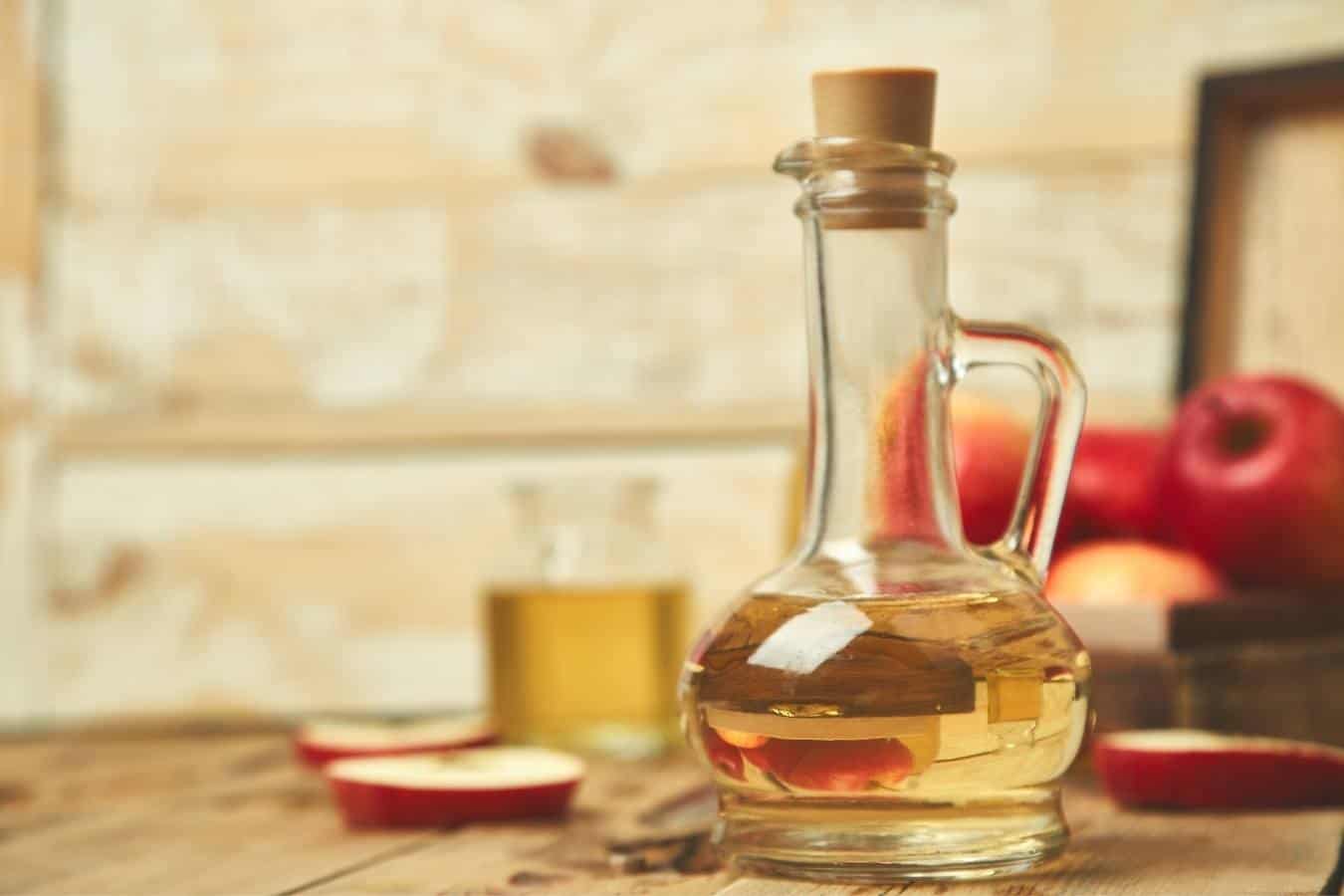When removing hair dye, natural methods like vinegar won’t damage your hair as much as chemical products. Read on to find out the benefits of vinegar for your hair and how to use it to remove hair dye.

You can use vinegar to remove hair dye, though the dye may not completely disappear. Vinegar is acidic and has strong cleansing properties that help to lighten the hair.
Benefits of Vinegar For Hair
Vinegar rinses are associated with the following benefits:
Balances Your Scalp’s pH
Your hair and scalp naturally have an acidic pH.
This makes vinegar the perfect addition to your hair care routine because it contains acetic acid or ethanoic acid.
Vinegar, therefore, promotes pH balance by lowering and maintaining the overall pH of your scalp and hair.
If the hair has an alkaline or high pH, it becomes prone to frizz and brittleness.
That’s because when the pH is too high, the cuticle opens, allowing your strands to dry out.
In addition, there’s more friction between hair fibers because of increased negative electrical charge. This causes cuticle damage and breakage.
Using vinegar helps prevent this and lowers the hair’s pH after it’s exposed to detergents, air pollution, and various products.
Cleanses Your Hair And Scalp
Vinegar is a good cleanser and is capable of stripping build-up from hair.
Some people use it in place of a clarifying shampoo because it’s natural and doesn’t contain harsh surfactants.
It removes greasiness, oiliness, chlorine, mineral deposits, and residue, leaving your strands clean and light.
Keeps Hair Healthy
If you’re looking for a natural, chemical-free, and affordable conditioner that keeps your locks healthy, vinegar is worth a try.
The apple cider vinegar rinse is a popular home remedy that helps to strengthen strands and boost hair health.
Unlike cream conditioners, apple cider vinegar doesn’t weigh down your hair, which helps create more volume and body.
There are claims that apple cider vinegar with the mother contains vitamins, minerals, and other beneficial nutrients for hair.
Therefore, consider adding vinegar to your final rinse twice a week to keep your hair healthy.
Helps With Dandruff
Apple cider vinegar is often used as a household disinfectant because of its antimicrobial properties.
Besides removing dried-up flakes caused by product build-up on your scalp, it can also treat dandruff caused by fungal or bacterial infections.
So if you’re suffering from a dry and itchy scalp, washing your hair with apple cider vinegar can help relieve the symptoms.
Adds Shine To Hair
When your hair is dry, the lack of moisture contributes to a dull and lackluster appearance.
By doing a vinegar rinse, you’re lowering the hair’s pH and closing the cuticles. With the cuticles closed, your strands can lock in more moisture and stay hydrated for longer.
This is especially beneficial for colored hair, which tends to be more porous.
When the cuticles are smoother, your hair’s natural oils can easily travel down the hair shaft, giving your hair more shine.
The smooth cuticle layer also prevents hair from tangling and makes it easier to manage.
Does Vinegar Remove Hair Dye?

Like most hair dye removal methods, vinegar can strip color only partially.
Vinegar’s color-stripping abilities are mostly anecdotal, with some even suggesting that vinegar helps your hair retain color.
This makes sense because vinegar has a low pH that causes the cuticles to tighten and close so that if you have permanent color, the dye molecules can’t escape.
If you have semi-permanent hair color, vinegar can produce great results.
That’s because semi-permanent hair dye coats the outer layer of the hair and doesn’t penetrate deep into the hair cortex.
This makes the dye easier to remove, given the cleansing properties of vinegar.
In contrast, permanent hair dye settles in the inner layer, where it’s more challenging to extract. Still, vinegar may be able to remove permanent dye partially.
The theory is that hair dye is alkaline and can be neutralized by the acidity of the vinegar.
However, vinegar is still not an effective hair dye remover because it also closes the cuticle, locking in the dye molecules in the cortex.
Generally, you can expect mixed results when using vinegar to remove hair dye.
You may have to do a vinegar rinse several times before you notice the color getting lighter, though the change will not be significant with permanent color.
For the best results, consider using other natural methods of removing hair dye, such as baking soda and vitamin C.
How To Use Vinegar To Remove Hair Dye

- Mix equal parts vinegar and hot water and allow to cool. You can use white vinegar or apple cider vinegar, but most people prefer ACV because it has more benefits.
- Shampoo your hair as usual and rinse. Using a clarifying shampoo at this stage also helps remove some of the color molecules.
- Apply the vinegar-water mix until your strands are saturated. Wear a shower cap and leave the apple cider vinegar to sit in your hair for roughly 20 minutes.
- Rinse the apple cider vinegar thoroughly from your hair.
- Do the vinegar rinse once or twice a week until you notice a change in your hair color.
Tips for Using Vinegar To Remove Hair Dye
- If you think vinegar has a nasty smell, you can always add a few drops of essential oil, such as lavender or witch hazel. Besides their lovely aroma, essential oils also have many benefits for hair.
- To remove dye more effectively using vinegar, wash your hair with hot water, to open the cuticle so the dye molecules can wash away. But make sure your final rinse uses cold water to flatten the cuticle.
- Avoid doing a vinegar rinse more than twice a week. Because of its cleansing properties, vinegar can strip too much of your natural oils, so your hair ends up dry. Do a deep conditioning treatment to restore your hair’s moisture levels if this happens.
Disclaimer: This site is not intended to provide professional or medical advice. All of the content on LovedByCurls.com is for informational purposes only. All advice should be followed at your own discretion. Ingredients may change at any time so always check the product label before using. Check our full disclaimer policy here.
